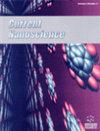Fabrication of Ti/Zr-SnO2/PbO2-Nd Electrode for Efficient Electrocatalytic Degradation of Alizarine Yellow R
IF 1.5
4区 材料科学
Q4 BIOTECHNOLOGY & APPLIED MICROBIOLOGY
引用次数: 0
Abstract
Introduction: A novel attempt to degrade alizarine yellow R (AYR) by lead dioxide (PbO2)/ neodymium (Nd) coated Ti anode was investigated. Method: Ti/Zr-SnO2/PbO2-Nd electrode showed high oxygen evolution potential, high current density, and neutral conditions, which favored the degradation of AYR. The PbO2-Nd layer on Ti/Zr-SnO2 was further characterized by scanning electron microscopy, and X-ray diffraction analysis, and X-ray photoelectron spectroscopy. The electrochemical properties of Ti/Zr- SnO2/PbO2-Nd electrode were evaluated by cyclic voltammetry, AC impedance spectroscopy, and accelerated life test. Result: The relatively higher oxygen evolution overpotential (~1.80 V) of the developed electrode can effectively suppress the occurrence of surface side reactions and oxygen evolution. A relatively lower charge transfer resistance (Rct, 18.0 Ω) of Ti/Zr-SnO2/PbO2-Nd electrode could be found. The Ti/Zr-SnO2/PbO2-Nd electrode exhibited an accelerated lifetime of 110 min under a very high current density of 10,000 A/m2. The doping of Nd could produce loosely-stacked sheet-like structures, thus, the number of active sites on the electrode surface increases. Conclusion: Moreover, an outstanding conductivity of Ti/Zr-SnO2/PbO2-Nd electrode was obtained, which favored the electron transfer and catalytic activity of the modified electrode. The Ti/Zr-SnO2/PbO2-Nd electrode exhibited improved electrochemical performances and higher oxygen evolution potential, and the highest oxygen evolution potential is 1.80 V. Under the current density of 30 mA/cm2, the electrocatalytic degradation of 92.3% could be achieved in 180 min. The electrochemical oxidation of AYR at the Ti/Zr-SnO2/PbO2-Nd electrode proved to be feasible and effective, indicating that it might be used for the elimination of AYR from wastewater. conclusion: The electrochemical oxidation of AYR at the Ti/Zr-SnO2/PbO2-Nd electrode proved to be feasible and effective, indicating that it might be used for the elimination of AYR from wastewater.制备用于高效电催化降解茜素黄 R 的 Ti/Zr-SnO2/PbO2-Nd 电极
简介:研究人员尝试用二氧化铅(PbO2)/钕(Nd)涂层钛阳极降解茜素黄 R(AYR)。方法:Ti/Zr-SnO2/PbO2-Nd 电极具有高氧演化电位、高电流密度和中性条件,有利于茜素黄 R 的降解。通过扫描电子显微镜、X 射线衍射分析和 X 射线光电子能谱对 Ti/Zr-SnO2 上的 PbO2-Nd 层进行了进一步表征。通过循环伏安法、交流阻抗光谱法和加速寿命测试评估了 Ti/Zr- SnO2/PbO2-Nd 电极的电化学特性。结果:所开发电极的氧演化过电位(~1.80 V)相对较高,可有效抑制表面副反应和氧演化的发生。Ti/Zr-SnO2/PbO2-Nd 电极的电荷转移电阻(Rct,18.0 Ω)相对较低。在 10,000 A/m2 的超高电流密度下,Ti/Zr-SnO2/PbO2-Nd 电极的加速寿命为 110 分钟。Nd 的掺杂可以产生松散堆积的片状结构,从而增加电极表面活性位点的数量。结论此外,Ti/Zr-SnO2/PbO2-Nd 电极还具有出色的导电性,这有利于改性电极的电子传递和催化活性。Ti/Zr-SnO2/PbO2-Nd电极具有更好的电化学性能和更高的氧进化电位,最高氧进化电位为1.80 V,在30 mA/cm2的电流密度下,180 min内可实现92.3%的电催化降解。事实证明,Ti/Zr-SnO2/PbO2-Nd 电极电化学氧化 AYR 是可行且有效的,表明它可用于消除废水中的 AYR:事实证明,在 Ti/Zr-SnO2/PbO2-Nd 电极上进行 AYR 的电化学氧化是可行且有效的,这表明它可用于消除废水中的 AYR。
本文章由计算机程序翻译,如有差异,请以英文原文为准。
求助全文
约1分钟内获得全文
求助全文
来源期刊

Current Nanoscience
工程技术-材料科学:综合
CiteScore
3.50
自引率
6.70%
发文量
83
审稿时长
4.4 months
期刊介绍:
Current Nanoscience publishes (a) Authoritative/Mini Reviews, and (b) Original Research and Highlights written by experts covering the most recent advances in nanoscience and nanotechnology. All aspects of the field are represented including nano-structures, nano-bubbles, nano-droplets and nanofluids. Applications of nanoscience in physics, material science, chemistry, synthesis, environmental science, electronics, biomedical nanotechnology, biomedical engineering, biotechnology, medicine and pharmaceuticals are also covered. The journal is essential to all researches involved in nanoscience and its applied and fundamental areas of science, chemistry, physics, material science, engineering and medicine.
Current Nanoscience also welcomes submissions on the following topics of Nanoscience and Nanotechnology:
Nanoelectronics and photonics
Advanced Nanomaterials
Nanofabrication and measurement
Nanobiotechnology and nanomedicine
Nanotechnology for energy
Sensors and actuator
Computational nanoscience and technology.
 求助内容:
求助内容: 应助结果提醒方式:
应助结果提醒方式:


